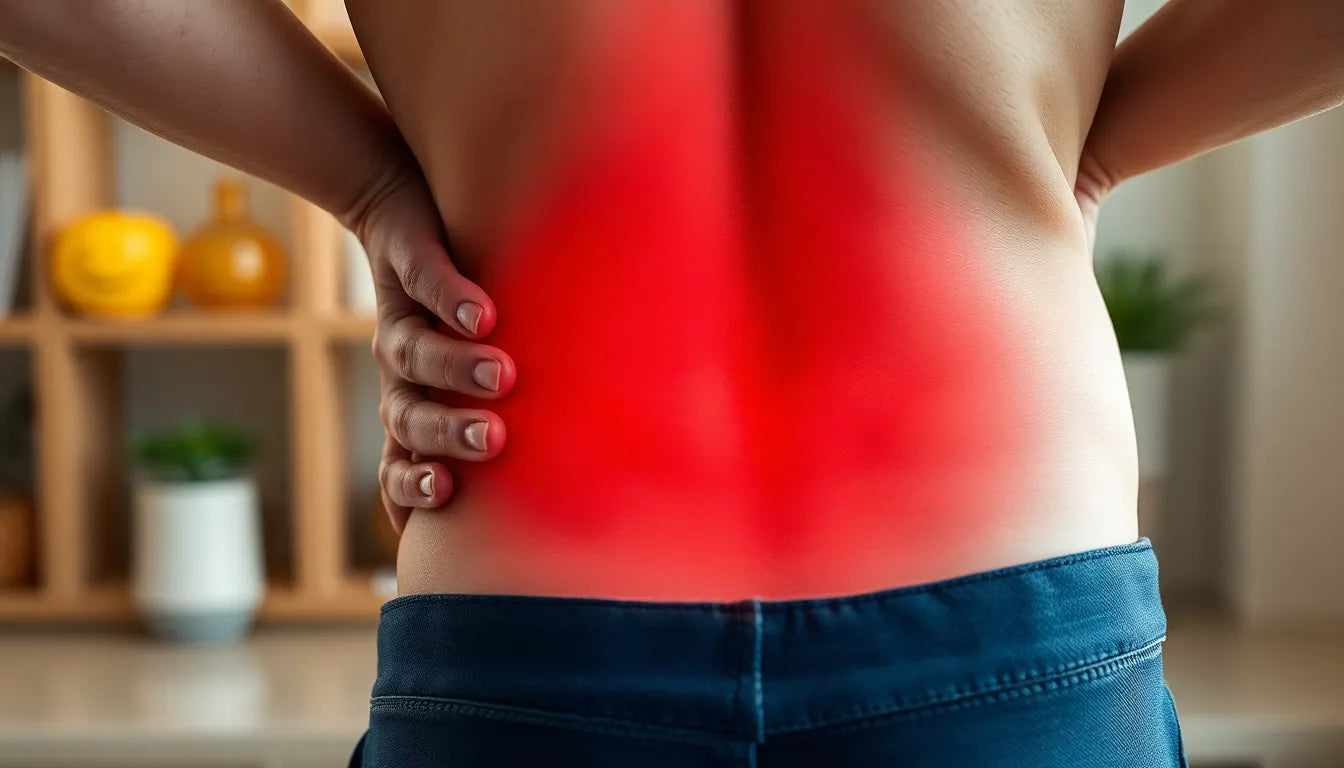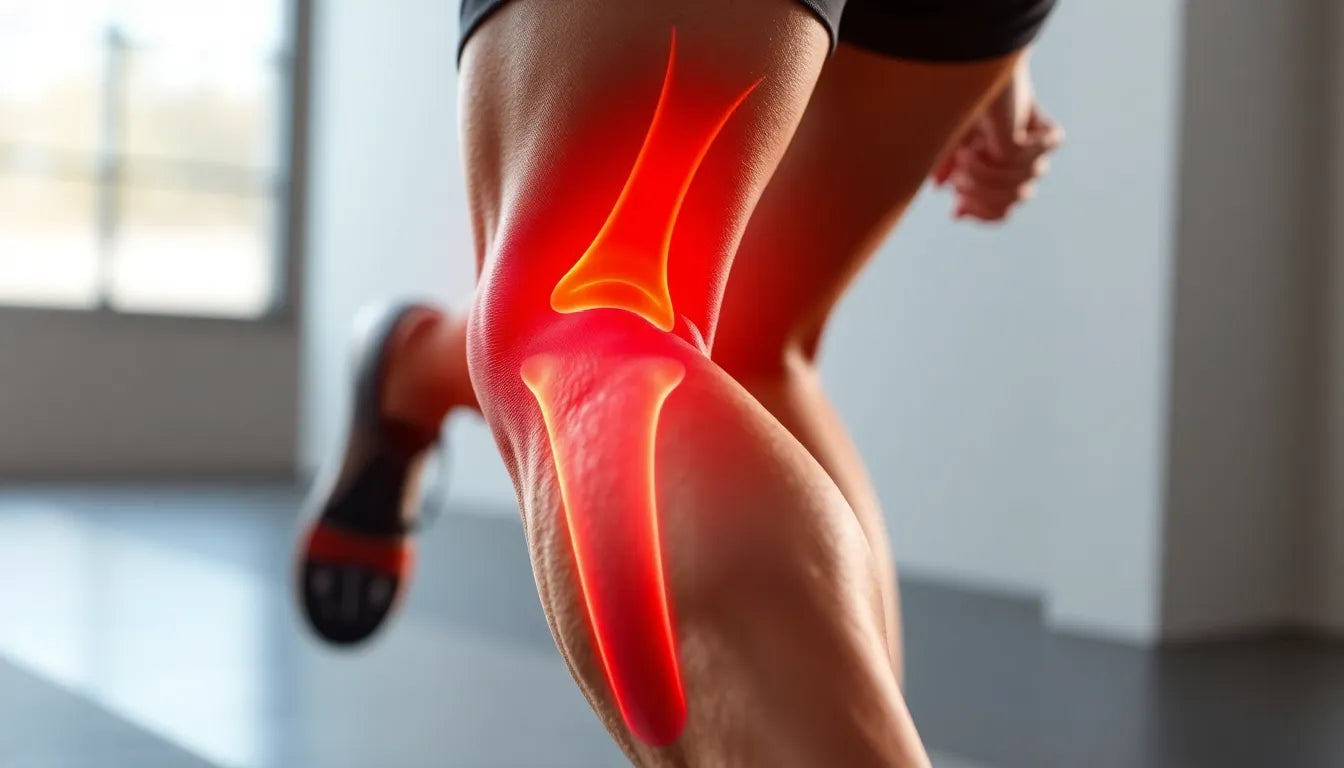Smerter på ydersiden af hoften er en almindelig lidelse, der kan påvirke mennesker i alle aldre og livsstadier. Denne form for hoftesmerte kan variere fra mild irritation til intens ubehag, hvilket kan begrænse daglige aktiviteter og reducere livskvaliteten. At forstå årsagerne til smerter på ydersiden af hoften er afgørende for effektivt at kunne håndtere og lindre symptomerne.
Almindelige årsager og risikofaktorer
Der er flere hyppige årsager til smerter på ydersiden af hoften, hvoraf de mest fremtrædende inkluderer overbelastningsskader, bursitis trochanterica, og gluteal tendinopati. Overbelastning kan opstå som følge af gentagne bevægelser eller pludselige ændringer i aktivitetsniveauet, hvilket belaster hofteområdet. Bursitis trochanterica, også kendt som slimsækbetændelse, er en tilstand, hvor slimsækkene i hoften bliver betændte, hvilket forårsager smerte og ubehag. Gluteal tendinopati er en overbelastning af glutealmusklerne og deres sener, hvilket kan føre til ømhed og smerter ved bevægelse.
Flere faktorer kan bidrage til udviklingen af disse tilstande. Livsstilsvalg som fysisk inaktivitet eller overdreven aktivitet kan forværre symptomerne. Fysiologiske faktorer som overvægt, diabetes, og gigt kan også spille en rolle i at forværre smerter på ydersiden af hoften. Derudover kan demografiske faktorer som alder og køn påvirke risikoen, hvor kvinder over 50 ofte er mere udsatte på grund af hormonelle ændringer i overgangsalderen.
Vigtigheden af tidlig intervention
Det er afgørende at tage smerter på ydersiden af hoften alvorligt og søge tidlig intervention. Hvis disse smerter ignoreres, kan de udvikle sig til kroniske problemer, der kræver mere omfattende behandling. En tidlig indsats kan forhindre forværring og fremme hurtigere bedring. En balanceret tilgang, der kombinerer medicinske behandlinger med egenomsorg, kan være yderst effektiv. Dette inkluderer at konsultere en læge eller fysioterapeut for at få en præcis diagnose og skræddersyede behandlingsplaner, samt at implementere livsstilsændringer, der understøtter helbredelse og forebyggelse.
Ved at forstå de underliggende årsager til smerter på ydersiden af hoften og tage aktive skridt til at adressere dem, kan man opnå en betydelig forbedring i livskvaliteten. Det er vigtigt at være opmærksom på kroppens signaler og søge professionel hjælp, når det er nødvendigt, for at sikre en effektiv og varig lindring af symptomerne.
in-depth examination of causes
Understanding the specific causes of smerter på ydersiden af hoften is crucial for effective treatment. One of the primary culprits is bursitis trochanterica. This condition involves the inflammation of the bursae, small fluid-filled sacs that cushion the bones, tendons, and muscles near the hip joint. Symptoms often include pain when lying on the affected side and sensitivity to pressure, leading to discomfort during daily activities.
Another frequent issue is gluteal tendinopathy, which results from the overuse of the gluteal tendons. This condition is characterized by pain during activities such as climbing stairs or standing from a seated position. The repetitive strain on these tendons can exacerbate the condition, making early diagnosis and treatment essential.
Additional contributing factors include sudden changes in physical activity levels, poor movement habits, and repetitive strain injuries. These factors can intensify the symptoms and prolong recovery if not addressed properly.
symptoms and diagnosis
Recognizing the symptoms of hip pain on the outside is the first step toward effective management. Common symptoms include pain during specific movements, tenderness in the hip area, and difficulty performing everyday activities like walking or climbing stairs. The pain can vary from a dull ache to sharp, intense discomfort, affecting one's ability to carry out routine tasks.
Diagnosis typically involves a physical examination by a healthcare professional, who may assess your range of motion and check for tenderness or swelling. Advanced diagnostic tools like ultrasound and MRI can help identify the underlying issues, providing a clearer picture of the condition to tailor an effective treatment plan.
treatment options
Addressing smerter på ydersiden af hoften often requires a combination of medical interventions and physiotherapy. Medical treatments may include the use of NSAIDs (non-steroidal anti-inflammatory drugs) to reduce inflammation and alleviate pain. In some cases, corticosteroid injections, often guided by ultrasound, can provide significant relief by directly targeting the inflamed areas.
Physiotherapy plays a crucial role in managing hip pain. A physiotherapist can develop a personalized exercise program focusing on strengthening the hip and gluteal muscles, improving flexibility, and enhancing overall stability. Continuing these exercises is vital to prevent relapse and ensure long-term recovery.

37 exercises collected in the ultimate exercise book
An expert-curated e-book featuring exercises to improve strength, mobility, and prevent/reduce pain throughout the body.
self-care and lifestyle adjustments
Self-awareness and lifestyle changes are integral to managing and preventing hip pain. Paying attention to movement and posture can help reduce strain on the hip area. Incorporating ergonomic aids, such as supportive footwear and cushions, can also alleviate pressure and provide additional comfort during daily activities.
Weight management is another critical factor, as excess weight can increase the load on the hip joints, exacerbating pain. Avoiding activities that provoke symptoms and gradually increasing physical activity can also contribute to effective pain management. By making these adjustments, individuals can significantly improve their quality of life and reduce the risk of chronic hip pain.
preventative measures and long-term management
Preventing and managing smerter på ydersiden af hoften effectively involves incorporating specific exercises and lifestyle adjustments. Regularly engaging in a structured exercise regimen can significantly strengthen the hip and gluteal muscles, reducing the risk of injury and pain. Exercises such as side leg raises, clamshells, and hip bridges are particularly beneficial. These exercises not only enhance muscle strength but also improve flexibility and joint stability.
For those looking to integrate these exercises into their routine, consider starting with a simple regimen. Begin with three sets of ten repetitions for each exercise, gradually increasing the intensity as your strength and endurance improve. Visual aids like images or video links can be helpful in ensuring proper form and technique, which is crucial for effectiveness and injury prevention.
daily habits for improved hip health
Adopting healthier daily habits can also play a pivotal role in managing hip pain. Being mindful of movement patterns and posture during everyday activities can help reduce unnecessary strain on the hip area. Simple changes, such as using ergonomic tools like supportive chairs and shoes, can alleviate pressure and enhance comfort.
Additionally, maintaining a healthy weight is crucial, as excess body weight can increase the load on the hip joints, exacerbating discomfort. Incorporating regular physical activity that is low-impact, such as swimming or cycling, can aid in weight management while minimizing stress on the hips.
patient education and awareness
Educating patients about recognizing early signs of hip pain is essential for prompt intervention and management. Understanding when to seek professional help is crucial, especially when self-care measures do not provide sufficient relief. Consulting a healthcare professional can lead to a more accurate diagnosis and a personalized treatment plan.
Encouraging awareness and education empowers individuals to take control of their health, fostering a proactive approach to managing hip pain. By staying informed and attentive to the body's signals, individuals can effectively prevent and alleviate discomfort associated with hip pain.

Posture Brace - Comfort+
Extra-comfort posture brace for daily support; stabilizes shoulders and back and improves posture awareness.
frequently asked questions
What are the most common causes of hip pain on the outside?
The most common causes include overuse injuries, bursitis trochanterica, and gluteal tendinopathy. These conditions often result from repetitive movements, inflammation, or strain on the hip area.
How can I differentiate between different types of hip pain?
Different types of hip pain can be distinguished by their symptoms. For example, bursitis typically causes pain when lying on the affected side, while tendinopathy often results in discomfort during activities like climbing stairs. Consulting a healthcare provider is recommended for an accurate diagnosis.
What exercises can help alleviate hip pain?
Exercises such as side leg raises, clamshells, and hip bridges can help strengthen the hip and gluteal muscles, alleviating pain. These exercises improve muscle strength, flexibility, and joint stability.
When should I consider seeing a doctor for hip pain?
If hip pain persists despite self-care measures, or if it significantly interferes with daily activities, it is advisable to see a doctor. Professional evaluation can provide a comprehensive diagnosis and tailored treatment plan.
Can lifestyle changes really make a difference in managing hip pain?
Yes, lifestyle changes can significantly impact the management of hip pain. Weight management, activity modification, and the use of ergonomic aids can reduce strain on the hip joints and alleviate pain.
Kilder
- Løbskade.dk. "Ondt på ydersiden af hoften."
- Hasselager Fysioterapi. "Udvendige hoftesmerter."
- Mølholm. "Irriteret slimsæk på hoftens yderside."
- Din Flexible Sundhed. "Smerter på ydersiden af hoften."
- Fysio.dk. "Ondt i hoften: Her er tre gode øvelser til dig med slidgigt."
- Regionshospitalet Horsens. "Udvendige hoftesmerter."
- Sundhed.dk. "Slimsæk betændelse i hoften."


















